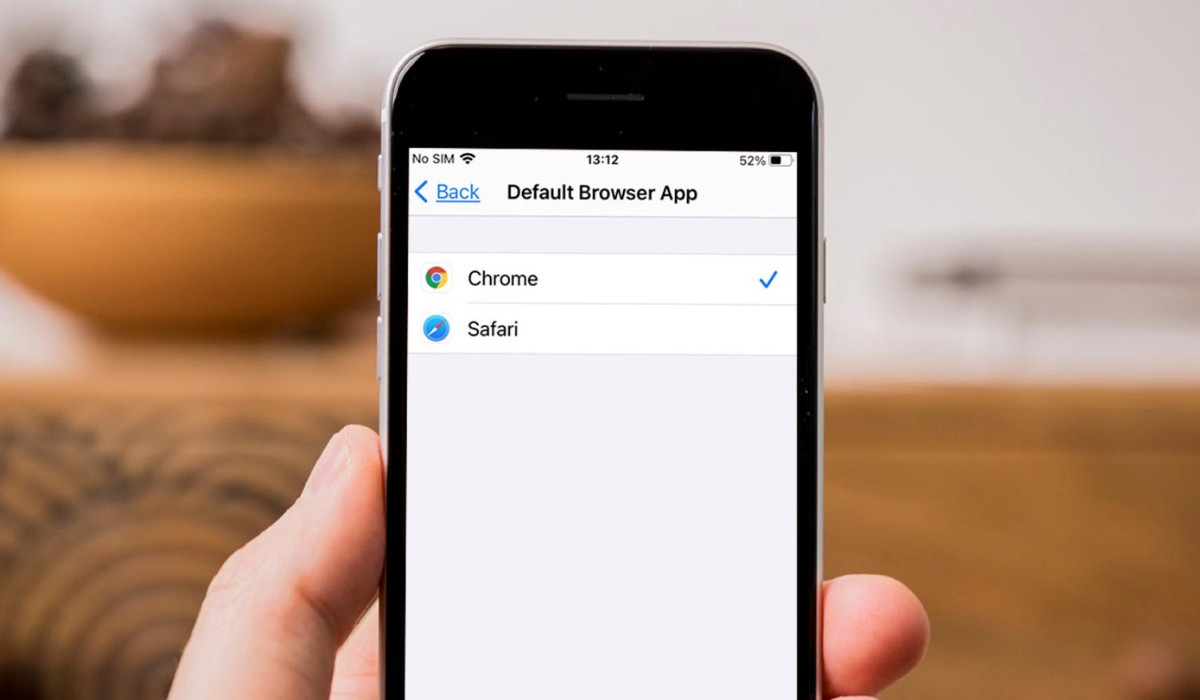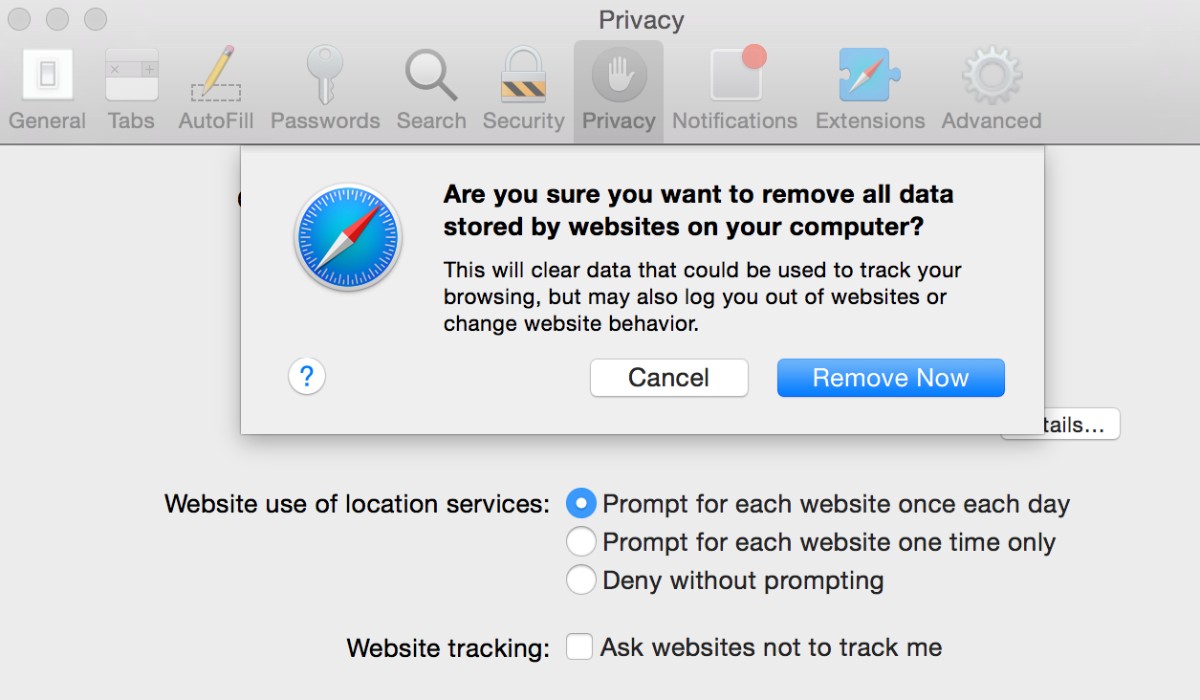Clear Safari Cache and History
Clearing the cache and history in Safari can help resolve various issues, such as slow performance, unresponsive web pages, and excessive memory usage. It's a simple yet effective way to refresh the browser and get it back to its optimal state. Here's how you can clear the cache and history in Safari:
-
Open Safari Preferences: Launch Safari and click on "Safari" in the top menu bar. From the drop-down menu, select "Preferences."
-
Navigate to the Privacy Tab: In the Preferences window, click on the "Privacy" tab. This is where you can manage your browsing data.
-
Manage Website Data: Under the "Privacy" tab, you'll find the "Manage Website Data" button. Click on it to view the stored website data, including cache and cookies.
-
Remove All Website Data: To clear the cache and history, click on "Remove All Website Data." Safari will prompt you to confirm the action. Click "Remove Now" to proceed.
-
Clear History: After removing the website data, you can also clear your browsing history. In the Safari Preferences window, navigate to the "History" tab and click on "Clear History." You can choose the time range for which you want to clear the history and then click "Clear History."
-
Restart Safari: Once you've cleared the cache and history, it's a good idea to restart Safari to ensure that the changes take effect.
By following these steps, you can effectively clear the cache and history in Safari, giving the browser a fresh start and potentially resolving any performance issues you may have been experiencing.
Disable Safari Extensions
Safari extensions are add-ons that enhance the functionality of the browser by providing additional features and customization options. While these extensions can be incredibly useful, they can also sometimes cause issues with the browser's performance. If you're experiencing problems with Safari, such as slow loading times, frequent crashes, or unresponsive web pages, disabling extensions can be a helpful troubleshooting step.
Here's how you can disable Safari extensions:
-
Open Safari Preferences: Launch Safari and click on "Safari" in the top menu bar. From the drop-down menu, select "Preferences."
-
Navigate to the Extensions Tab: In the Preferences window, click on the "Extensions" tab. This is where you can manage all the installed extensions in Safari.
-
Disable Extensions: You'll see a list of all the installed extensions along with checkboxes next to each one. To disable an extension, simply uncheck the box next to it. This will effectively disable the extension without uninstalling it.
-
Remove Extensions: If you want to completely remove an extension from Safari, you can click on the extension and select "Uninstall." This will remove the extension from Safari entirely.
-
Restart Safari: After disabling or removing extensions, it's a good idea to restart Safari to ensure that the changes take effect.
By disabling or removing extensions, you can troubleshoot issues related to Safari's performance and stability. If you notice an improvement in the browser's behavior after disabling certain extensions, you may consider re-enabling them one by one to identify the problematic extension. This process can help pinpoint the specific extension causing issues and allow you to take appropriate action, such as updating or removing the problematic extension.
Remember that while extensions can add valuable functionality to Safari, having too many active extensions or using outdated or incompatible ones can impact the browser's performance. Regularly reviewing and managing your extensions can help keep Safari running smoothly and ensure a seamless browsing experience.
Taking the time to disable or remove problematic extensions can contribute to restoring Safari to its normal state, allowing you to enjoy a more reliable and efficient browsing experience.
Reset Safari Settings
Resetting Safari settings can be a valuable troubleshooting step when you encounter persistent issues with the browser. It essentially reverts the browser to its default state, eliminating any customizations or configurations that may be contributing to the problems you're experiencing. Whether you're dealing with frequent crashes, unresponsive web pages, or erratic behavior, resetting Safari settings can help restore the browser to a stable and functional state.
Here's how you can reset Safari settings:
-
Open Safari Preferences: Launch Safari and click on "Safari" in the top menu bar. From the drop-down menu, select "Preferences."
-
Navigate to the Advanced Tab: In the Preferences window, click on the "Advanced" tab. This is where you can access advanced settings and configurations for Safari.
-
Enable Develop Menu: At the bottom of the Preferences window, check the box next to "Show Develop menu in menu bar." This will enable the Develop menu in Safari.
-
Access Develop Menu: After enabling the Develop menu, you'll see it appear in the top menu bar. Click on "Develop" and select "Empty Caches." This will clear the cached data in Safari.
-
Reset Safari: Still within the Develop menu, you'll find the option to "Reset Safari." Click on this option to open the reset dialog box.
-
Select Reset Options: In the reset dialog box, you'll have the opportunity to choose which settings you want to reset. You can reset various aspects of Safari, including history, top sites, and more. Select the options that align with the issues you're facing.
-
Confirm the Reset: After selecting the reset options, click "Reset" to confirm the action. Safari will proceed to reset the chosen settings to their default state.
-
Restart Safari: Once the reset process is complete, it's recommended to restart Safari to ensure that the changes take effect.
By following these steps, you can effectively reset Safari settings, potentially resolving persistent issues and restoring the browser to a stable and functional state. It's important to note that resetting Safari settings will remove any customizations, saved passwords, and website data, so it's advisable to consider this option when other troubleshooting steps have been unsuccessful.
Resetting Safari settings can serve as a powerful tool for addressing various issues, providing a fresh start for the browser and allowing you to enjoy a smoother and more reliable browsing experience. Whether you're encountering performance issues, unexpected behavior, or other concerns, resetting Safari settings can help bring the browser back to normal, ensuring that you can navigate the web with confidence and efficiency.
Update Safari to the Latest Version
Keeping Safari up to date with the latest version is crucial for ensuring optimal performance, security, and compatibility with modern websites and web applications. Apple regularly releases updates for Safari, addressing vulnerabilities, introducing new features, and enhancing overall stability. By updating Safari to the latest version, you can benefit from improved browsing experiences and safeguard your online activities. Here's how you can update Safari to the latest version:
-
Check for Updates: Launch Safari and click on "Safari" in the top menu bar. From the drop-down menu, select "About Safari." A window will appear, indicating the current version of Safari installed on your system. Next to the version number, there will be an option to "Check for Updates." Click on this to initiate the update process.
-
Install Available Updates: If a new version of Safari is available, you will be prompted to install it. Follow the on-screen instructions to download and install the latest update. Depending on your system settings, you may need to enter your administrator password to authorize the installation.
-
Automatic Updates: To ensure that Safari stays up to date automatically, you can enable the "Install system data files and security updates" option in the "Software Update" section of System Preferences. This will allow Safari to receive updates along with other system components, keeping it current without requiring manual intervention.
-
Restart Safari: After updating Safari to the latest version, it's advisable to restart the browser to ensure that the changes take effect. This can help prevent any lingering issues related to the previous version and ensure that you're benefiting from the latest improvements and security enhancements.
Updating Safari to the latest version is a proactive measure that can enhance your browsing security, protect your personal information, and provide access to the latest web technologies. By staying current with Safari updates, you can enjoy a more secure and reliable browsing experience, benefiting from improved performance and compatibility with evolving web standards.
Regularly checking for and installing Safari updates is a simple yet effective way to ensure that your browser remains in peak condition, allowing you to explore the web with confidence and peace of mind. Whether you're using Safari for work, leisure, or both, keeping it up to date is essential for staying connected, productive, and secure in the digital landscape.

























